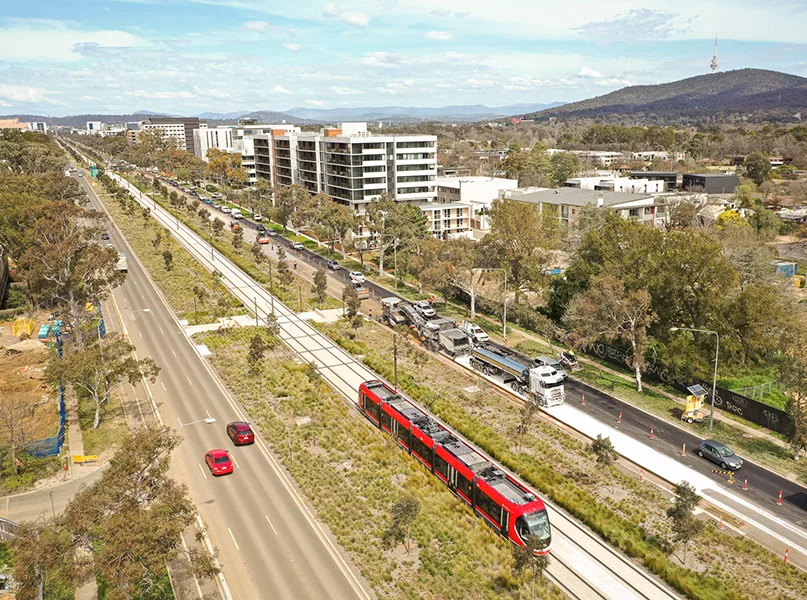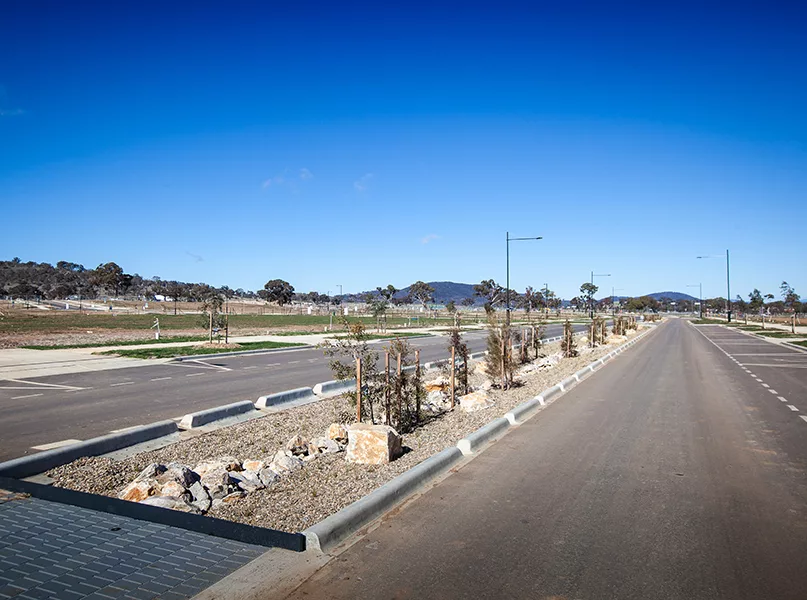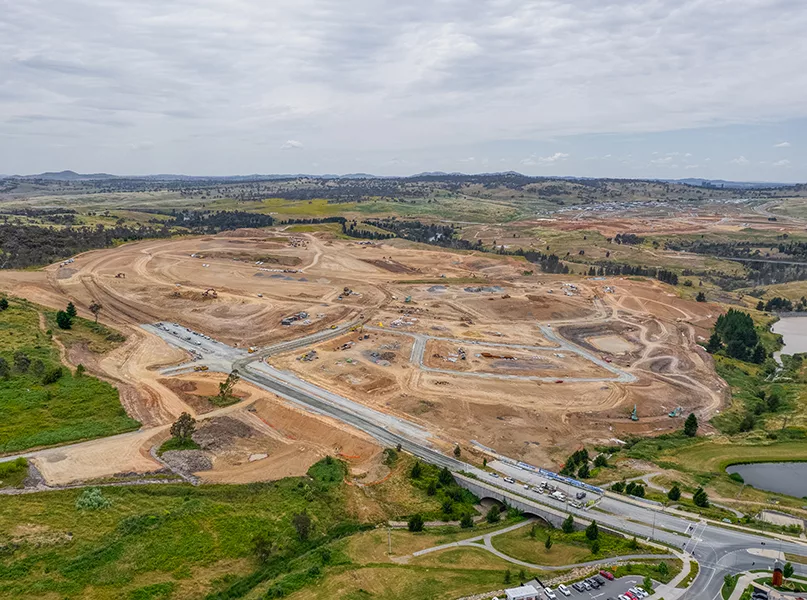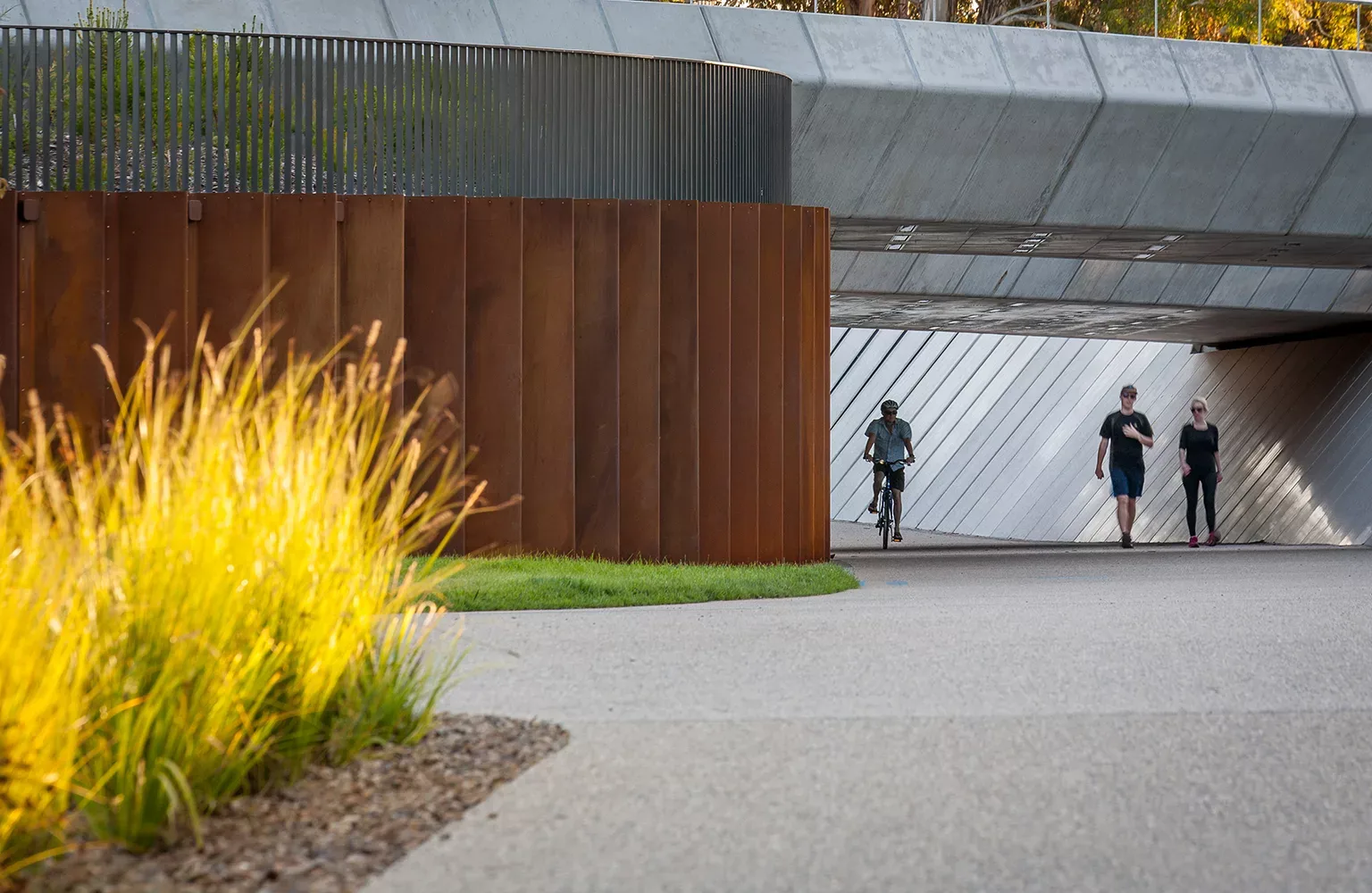COMMITTED TO CIVIL INFRASTRUCTURE
Operating in the Australian Capital Territory (ACT) and New South Wales (NSW), the company continues to spearhead the industry at mid-tier level with an enviable reputation for high-quality workmanship.
“We have delivered projects to several large private developers and a diverse government client base for many years,” Helmers informs us.
Furthermore, Wodens has been recognised at state and national award ceremonies, and recently received the National Business Excellence Award for Large Civil Construction Company of the Year.

CONSTRUCTING A COMPANY CULTURE
“When faced with a challenge, our team efficiently overcomes it. With that kind of mentality, it means we don’t heavily rely on subcontractors.”
This mindset is made possible by formal and on-the-job training for the workforce, a crucial differentiation for Wodens as the industry has shifted towards subcontracting.
“We genuinely believe in producing world-class work, and we can achieve this with high-quality materials while paying close attention to detail,” Helmers notes.
All this, combined with effective project management, has established Wodens’ strong reputation as a trusted industry leader.

SIGNIFICANT SCHEMES
Having been recently awarded Stage 1B of the Monaro Highway Upgrade Package, an AUD$80 million design and construction project, Wodens’ enthusiasm is palpable as the task has been on its radar for several years.
“Our team has put significant effort into securing this job, which is expected to be completed over the next two years. There will also be several more stages of the Monaro Highway Upgrade Package, which will be very exciting to tender and construct,” confirms Helmers.
The Monaro Highway Upgrade Stage 1B project involves constructing approximately 2.3km of dual carriageway, upgrading existing carriageways, a building a 196 metre (m) concrete girder bridge.
This also includes replacing a bridge over Dog Trap Creek, adjusting local roads, and undertaking associated infrastructure upgrades.
“We have some exciting work in hand, and the Monaro Highway Upgrade Package is a landmark project for us; we will make an additional effort to ensure it is delivered on time for the community,” he assures us.
The company is passionate about the civil engineering industry and believes in the strong foundations it established in the early years. With this in mind, Wodens will continue to build upon what it has already created.
“We are also targeting the William Hovell Drive Duplication project located on the western side of Canberra this year. This is a significant infrastructure project for the ACT government, which involves upgrading and duplicating 4.5km of the drive.
“Additionally, it will include the construction of a 7km, 3m-wide asphalt off-road shared path, and nine architecturally designed retaining walls, ensuring works remain within the road reserve and limit impacts on sensitive environmental areas,” Helmers details.

A COMMENDABLE COLLECTION
Highlights in Wodens’ portfolio include the Kings Avenue Bridge in Canberra, which was completed in 2011 and is seen by the National Capital Authority as the most significant infrastructure project since the construction of the new Parliament House.
This is quite an accolade for the company, as the bridge, located at the Kings Avenue/Parkes Way roundabout, carries the most traffic of any intersection in the city.
“The architectural design was based on the new Parliament House, and as a result, the curved surfaces added another degree of difficulty to this extremely complex project,” recalls Helmers.
Another key project completed by Wodens was the Molonglo Link Bridge and associated trunk sewer, which represents a high point in the company’s history.
“Built in partnership with Civil Bridge & Wharf (CBW), the 243m bridge is the longest and highest ever constructed in the ACT. At 30m above the Molonglo River, it posed significant engineering challenges, such as construction and environmental management in a sensitive area,” Helmers says proudly.
The associated 2,992m of trunk sewer, with depths of 5.5m and ranging in diameter from 300 millimetres (mm) to 600mm, was laid to a minimum grade of 0.4 percent. One of the requirements was the separate construction on each side of the bridge, with the infill section attached before each 35m section of the box girder was launched.
Varying from the traditional approach of commencing at the low point of a sewer and laying towards the upstream direction posed survey and construction control issues in achieving the grades and tolerances required by the client.





































